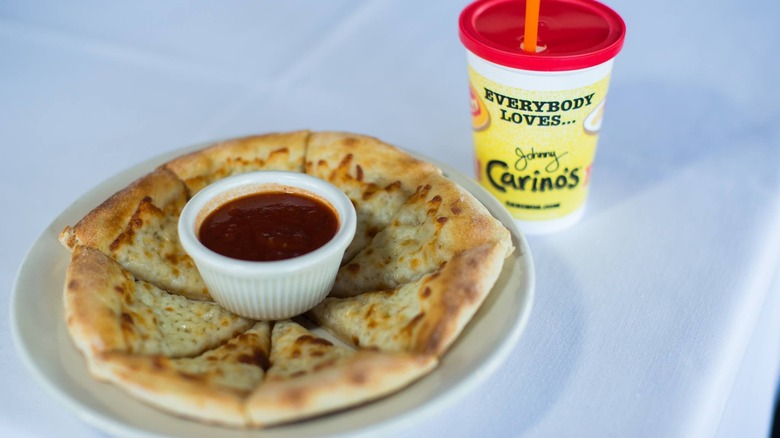The Once-Popular Italian Chain That Went From Booming To Bankrupt
There's no way to sugarcoat it; the restaurant industry's tough. According to statistics released by the National Restaurant Association, only around a third of food businesses survive for longer than a decade. And even with their many locations, chains aren't excluded from potential downfall. Restaurants once full of buzzy charm transform into tricky financial straits.
Several such chains exist, but the once-popular Johnny Carino's Italian is a prime example. The business is still around, but what was once over 170 locations nationwide in 2006 has now been whittled down to just 24 in 2025. And way back in 2014, its parent company, Fire Up, even filed for bankruptcy, a move that didn't prove successful, as it had to repeat the process in 2016.
So why did this Tuscan-furnished chain — which serves casual pizzas, sandwiches, and comforting Italian-American classics — hit such financial roadblocks? Well, it comes down to hurdles that include navigating rents with landlords, the general competitive nature of casual dining, and other operating costs. Nation's Restaurant News dives into the figures: From the 2014 to 2015 fiscal years, revenue declined from $110 million to $86 million, although more people had visited the restaurant. Locations had already been steadily closing since the 2008 recession, with a downturn in the oil industry and Affordable Care Act expenses also cited as an additional source of financial pressure. So while Olive Garden still fires breadstick after breadstick, all such factors have made Johnny Carino's signature lasagna a little less accessible.
Financial struggles have plagued many casual dining chains
Curiously, Johnny Carino's locations in smaller cities and on the outskirts have better weathered the bankruptcy storm. While the chain does operate some restaurants in population-dense areas like Los Angeles and Oklahoma City, many of its still-operating locations exist in small towns or in the suburbs. They're not unique in such a predisposition; dense urban areas are frequently difficult for casual chains. Steep rents, difficult real estate, and tight competition make operating such locations daunting, precisely the conditions that caused Johnny Carino's downturn.
This Italian-American restaurant isn't alone in its bankruptcy struggles — other casual dining chains also experience financial difficulties. In fact, 2024 brought a 0.9% decline in this restaurant category (per CNN Business). Such issues are further cemented by the extensive list of 2024 restaurant bankruptcies that include famed brands like TGI Fridays and Red Lobster.
As dining out costs rise yet budgets shrink, this brand of eating out is being phased out in favor of cheaper fast food or more sophisticated eateries for higher-income brackets. Issues include complications with suppliers — the case for Red Lobster — or menus that no longer offer optimal price for performance (an issue for Outback Steakhouse). Across the board, the increasing price of labor – in both operating and constructing these businesses — has further worsened the issue. So, although it occurred nearly a decade prior, Johnny Carino's bankruptcy falls in line with the start of a widespread downward dining trend for casual chains.


